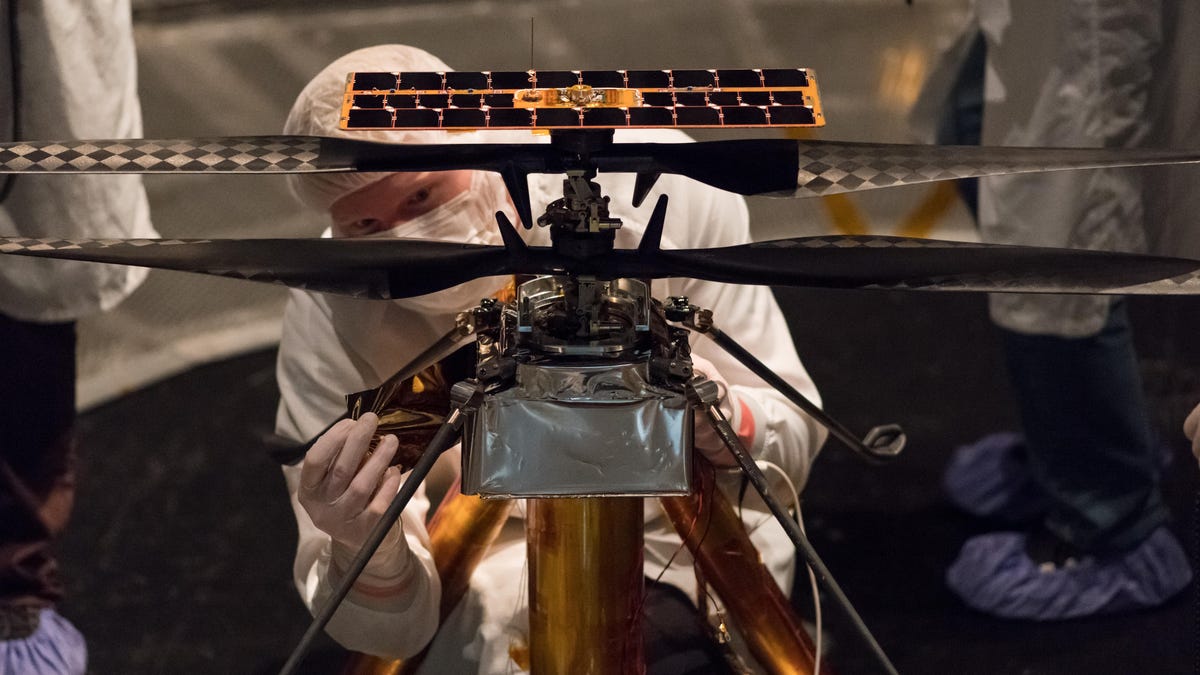NASA's Mars helicopter is ready to take flight on the Red Planet
Get to the (Martian) chopper!!!

After passing a critical series of tests at NASA's Jet Propulsion Laboratory, the space agency's Mars helicopter is ready to take flight over the Red Planet.
"The next time we fly, we fly on Mars," said MiMi Aung, Mars Helicopter project manager, in a press release.
The Mars helicopter project is designed as a technology demonstration that will ascertain how well a flying vehicle can perform on one of our nearest neighbors. To date, NASA has explored the Martian surface with rovers -- the dearly departed twins, Spirit and Opportunity, and its latest, Curiosity -- so taking to the skies will provide an entirely new way to explore the barren plains of Mars.
Achieving flight on Earth was hard enough. Achieving it on another planet, 90 to 640 million miles (approx. 55 to 400 million kilometers) away, is another challenge altogether. Mars' atmosphere is much thinner than Earth's and the planet drops to icy temperatures that can destroy sensitive electronics. To ensure the helicopter can cope with those conditions, NASA has subjected it to a number of rigorous tests.
NASA recapitulated some of the conditions that the helicopter would find itself in when it lands on Mars, gathering data about its performance to tweak it for its historic first flight.
"Gearing up for that first flight on Mars, we have logged over 75 minutes of flying time with an engineering model, which was a close approximation of our helicopter," said Aung.
In JPL's Space Simulator, a vacuum chamber half as wide as a school bus, the team created a faux Mars atmosphere and then dropped the chopper inside. They also created an artificial gravity that matched what the helicopter would experience on Mars by creating a "gravity offload system".
The test 'copter only reached a height of 2 inches (approx. 5 centimeters) off the ground, but that was all that was required to confirm that it will be able to do its job when it reaches Mars. A second test had the helicopter hover for an entire minute. Understandably, the team was pretty emotional at the sight of the chopper achieving flight.
"Watching our helicopter go through its paces in the chamber, I couldn't help but think about the historic vehicles that have been in there in the past," said Aung. "The chamber hosted missions from the Ranger Moon probes to the Voyagers to Cassini, and every Mars rover ever flown."
Those tests pave the way for the chopper to take flight for the first time over the Red Planet, when it launches with NASA's next Mars rover in 2020. It is expected to reach the Martian surface in February 2021, tucked delicately within the belly of the next, currently nameless, rover.
As of now, the Mars helicopter doesn't have a name either, but this CNET writer is firmly in the call it "Dutch", after Arnold Schwarzenegger's famous Predator protagonist.

